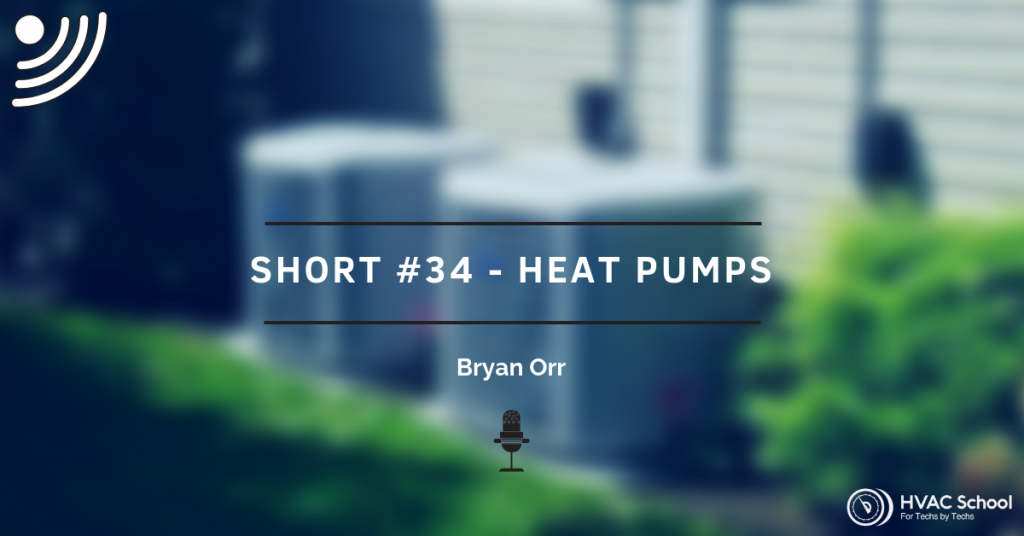Short #34 – Heat Pumps (Podcast)

In this short podcast episode, Bryan speed-talks through all the basics of heat pumps and how they function.
Heat pumps are not physical pumps or components on an A/C system. A heat pump is an HVAC unit that is also capable of heating a home by reversing the refrigeration cycle. When that reversal happens, the traditional indoor “evaporator” coil acts as a condenser that rejects heat in the home. As such, the traditional outdoor “condenser” acts as an evaporator that absorbs heat from the outdoors so long as the refrigerant is colder than the outside. Due to how they function, heat pumps are more common in warmer climates.
The heat pump's reversal happens on the reversing valve, which diverts refrigerant right before the compressor. A solenoid shifts the valve when you enter heat mode from cool mode (or vice versa), and that's how refrigerant gets diverted. These just slide back and forth, and they are pretty reliable; they don't typically malfunction. Before a reversing valve can work, the system must be ON; the valve cannot shift if the unit is OFF.
Heat pumps typically have two metering devices, one by the indoor unit (cool mode) and one by the outdoor unit (heat mode). A check valve controls the flow of refrigerant to the correct metering device. Heat pump systems may also often have suction accumulators and crankcase heaters to help prevent oil loss and flooded starts in the compressor. The defrost controls for heat pumps typically have a timer and defrost sensors.
We also discuss:
- Issues with heat mode TXVs
- Checking the charge on a heat pump
- Defrost sensor types and operation
- Auxiliary heat
- Economic balance point
Learn more about Refrigeration Technologies HERE.
Author:









Comments
To leave a comment, you need to log in.
Log In